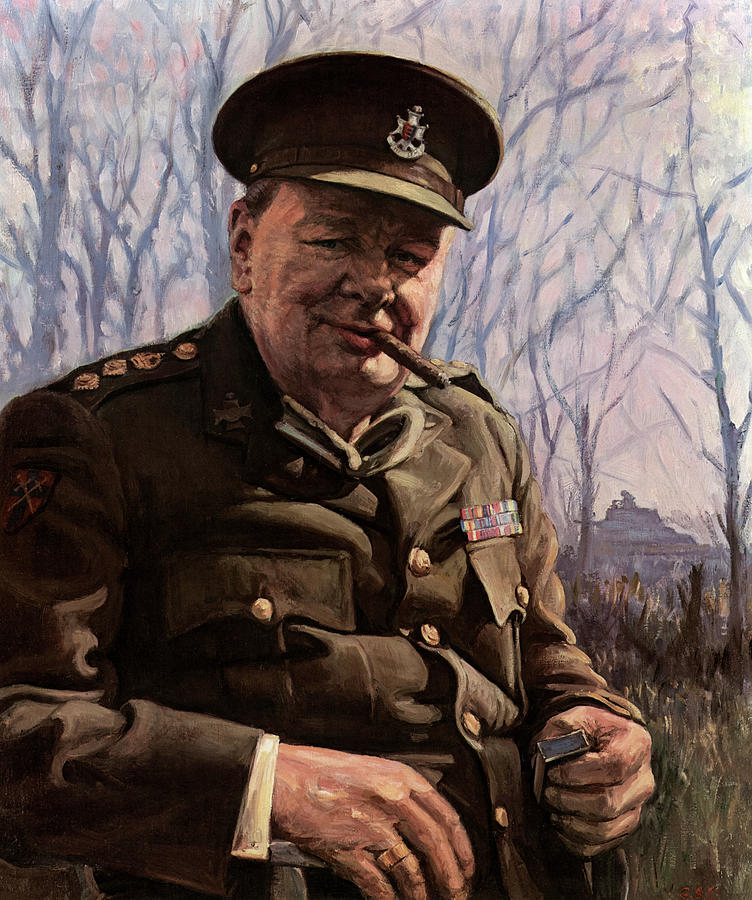

Once Roosevelt had departed, Churchill stayed a further day to spend some time 'painting from the tower the only painting I attempted during the War'. Churchill’s doctor, Lord Moran, who joined them, recorded in his diary, 'We stood gazing at the purple hills, where the light was changing every minute'. One can only imagine what the two discussed as they surveyed the scene. After their arrival Churchill and Roosevelt looked out from the top of the tower in the place where they stayed, the Villa Taylor, on the outskirts of the old city walls. It took five hours to drive the 150 miles to Marrakech. The conference had lasted 10 days and, as the President prepared to leave, Churchill insisted, 'You cannot come all this way to North Africa without seeing Marrakech … I must be with you when you see the sun set on the Atlas Mountains'. Roosevelt, to join him on a visit to one of his most favourite places. After the Anglo-American Casablanca Conference in January of 1943, Churchill persuaded the American President, Franklin D. It was during a crucial moment of the war in Europe that Churchill took time out after a vital summit. In his essay Painting as a Pastime, Churchill acknowledges the influence of Henri Matisse, who was also charmed by the luminous North African light and who completed a number of important works during his time in Morocco. As David Coombs has stated, 'These Moroccan pictures are a reminder of his friendship with the painter Sir John Lavery, who had a house in Tangier'. He continued to paint in North Africa, particularly in Marrakech, whenever circumstances allowed.

The sun is brilliant and warm but not scorching the air crisp, bracing but without being chilly the days bright, the nights cool and fresh'. He seemed captivated by Marrakech in particular, writing, 'Here in these spacious palm groves rising from the desert the traveller can be sure of perennial sunshine … and can contemplate with ceaseless satisfaction the stately and snow-clad panorama of the Atlas Mountains. Thereafter he wrote, 'Morocco was to me a revelation'. The painting captures one of his favourite views, a vista across the city of Marrakech as it rises towards the high peaks of the Atlas Mountains.Ĭhurchill began travelling to Marrakech during the late 1930s, following a winter stay in 1935-36. Yet, even in the midst of fighting against Nazi tyranny, he managed to devote a few hours to paint a single canvas, the present work, Tower of the Koutoubia Mosque.

He stopped painting only once when he was forced to harness all of his energies on the office of wartime Prime Minister. His enthusiasm for his “paint box” was sustained throughout his life. Tower of the Koutoubia Mosque is commonly regarded as the most important painting by Sir Winston Churchill, with its story interwoven into the history of the twentieth century.Ĭhurchill began painting in 1915, aged 40, at a well-documented low point in his career. 'You cannot come all this way to North Africa without seeing Marrakech … I must be with you when you see the sun set on the Atlas Mountains'


 0 kommentar(er)
0 kommentar(er)
